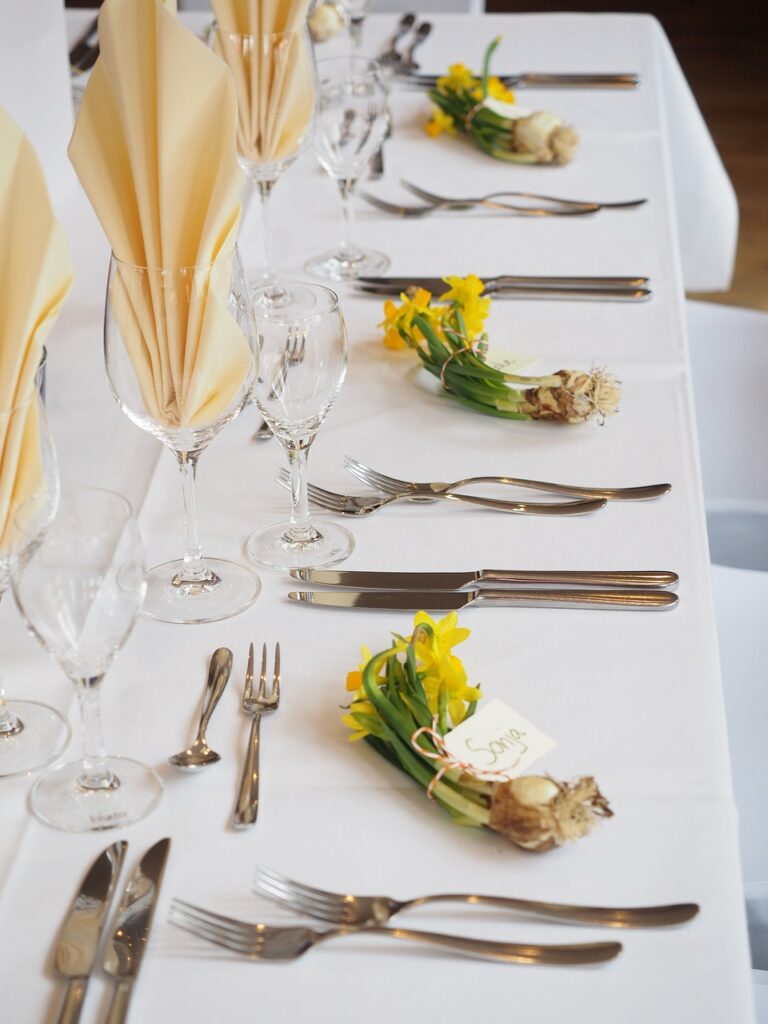Planning your wedding reception involves many details, and one of the key aspects that can greatly impact the guest experience is the seating arrangement. A well-thought-out seating chart not only ensures smooth logistics but also creates a comfortable and enjoyable atmosphere for everyone attending. Whether you’re navigating the process for the first time or looking to refine your seating plan, here’s a comprehensive guide to crafting a wedding seating chart that suits your vision and accommodates your guests:
Start Early and Gather Information
Begin working on your seating chart well in advance of your wedding day. Start by collecting RSVPs from your guests to determine the final headcount and gather information such as dietary preferences, special accommodations, and relationships (e.g., family members, close friends, colleagues).
Understand Your Venue Layout
Familiarize yourself with the layout of your reception venue, including the number of tables available, their sizes, and their placement within the space. Consider factors such as proximity to the dance floor, bar, and restroom facilities when organizing your seating plan.
Create a Floor Plan
Sketch or use a digital tool to create a floor plan of your reception venue. This allows you to visualize the seating arrangement and experiment with different table configurations before finalizing your plan. Consider factors such as table shapes (round, rectangular), head table placement (if applicable), and guest traffic flow.
Group guests strategically based on relationships, interests, and commonalities to facilitate lively conversation and ensure everyone feels comfortable and included. Consider seating close friends and family members together, placing older guests away from loud speakers, and accommodating children at kid-friendly tables with activities.
Head Table or Sweetheart Table
Decide whether you prefer a traditional head table for the wedding party, where the bride and groom sit with their attendants, or a sweetheart table for just the newlyweds. Both options have their advantages—head tables allow the wedding party to celebrate together, while sweetheart tables provide a private moment for the couple.
Consider Seating Charts vs. Escort Cards
Choose between a seating chart displayed at the entrance of your reception venue or individual escort cards that guests can pick up to find their assigned tables. Seating charts offer a visual overview of the entire layout, while escort cards provide flexibility for guests to find their seats at their leisure.
Label Tables Clearly
Assign each table a number or name and clearly label them in your seating chart or on escort cards. Ensure that signage is prominent and easy to read to avoid confusion among guests. Consider incorporating a seating chart display that matches your wedding theme or décor for a cohesive look.
Accommodate Special Needs and Preferences
Take into account any special dietary needs, accessibility requirements, or preferences indicated by your guests when arranging seating. Coordinate with your venue or catering team to ensure that guests with specific dietary restrictions or mobility issues are comfortably accommodated.
Review and Finalize
Review your seating chart multiple times to ensure accuracy and balance. Double-check for any last-minute changes in RSVPs or guest preferences and make adjustments accordingly. Share the finalized seating plan with your venue coordinator, catering team, and wedding planner to facilitate a smooth execution on the day of your wedding.
Stay Flexible and Communicate
While careful planning is essential, remain flexible and prepared to make minor adjustments as needed. Communicate the seating arrangements clearly to your guests through your wedding website, invitation inserts, or signage at the reception venue. Encourage guests to RSVP promptly and notify you of any changes to their attendance or seating preferences.
Crafting a wedding seating chart is an art that balances logistics with hospitality, ensuring that your guests feel welcomed and comfortable throughout your reception. By starting early, gathering essential information, and thoughtfully arranging your seating plan, you can create an enjoyable and inclusive atmosphere where everyone can celebrate your special day with joy and warmth. Embrace the process of organizing your wedding seating chart as an opportunity to personalize your reception and create memorable moments for you and your loved ones.



